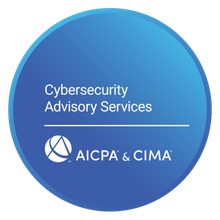Cloud Services for Tax Professionals: Navigating IRS Compliance Guide
In the dynamic landscape of modern tax preparation, where technological advancements continue to reshape the way financial data is managed, the integration of Cloud Services for Tax Professionals has emerged as not only a pragmatic choice but a strategic imperative. Amidst the growing volume of sensitive client information traversing digital pathways, tax experts confront the dual challenge of efficiently managing and processing this data while ensuring unwavering compliance with IRS regulations.
The undeniable nexus of data security and IRS compliance within the realm of tax preparation underscores the significance of this guide. As tax professionals embrace the convenience and operational efficiency offered by cloud services, they are compelled to recalibrate their approach to safeguarding client information. This guide navigates the critical intersection of Cloud Services for Tax Professionals and the absolute need to uphold data integrity, thereby meeting the exacting standards set forth by the IRS. Importantly, our exploration extends beyond the mere utilization of cloud platforms; it delves into the intricate steps required to secure the very devices that handle, store, and transmit this invaluable information.
In the forthcoming sections, we embark on an in-depth exploration of tailored strategies and practices that ensure the devices interfacing with cloud services are fortified against potential breaches, vulnerabilities, and compliance pitfalls. Through the unveiling of layered security measures, we empower tax professionals to confidently navigate the intricacies of modern tax preparation while honoring the rigorous demands of IRS compliance.
As we journey together, we uncover the nuances of securing the devices that bridge our connection to the cloud. This proactive approach not only augments data protection but also underscores your unwavering commitment to maintaining the highest standards of IRS compliance.
Securing Access Devices: The Foundation of Compliance
As we step into the world where access devices connect us to cloud services, their security takes center stage. While we navigate IRS compliance requirements, it's crucial to remember that compliance spans beyond the cloud—it extends to every device that interacts with client data. The security of cloud data relies on the strength of these access points. To ensure compliance, robust security measures are essential. By fortifying these access points, tax professionals build an impregnable defense, ensuring a future of secure, confident, and compliant tax preparation. This foundation not only safeguards sensitive data but also upholds your commitment to meeting regulatory standards.
Device Encryption: Safeguarding Sensitive Client Data
Amid the intricate landscape of cloud services, data security emerges as a vital concern. Picture it as a critical thread that weaves through the fabric of modern tax preparation. Access devices, acting as gatekeepers between tax professionals and the cloud, play the role of vigilant sentinels. Here's where encryption takes the stage as a powerful defender. Encryption serves as a protective cloak for your data—it's like building an impregnable fortress that keeps sensitive information hidden from prying eyes.
This fortified protection isn't limited to when data is moving between places; it extends even when data is at rest. It's a comprehensive layer of security that ensures your clients' information remains shielded from any potential breaches. Imagine it as an unbreakable lock that keeps your clients' trust intact and maintains the high bar set by IRS compliance standards. Encryption isn't just a security measure; it's a promise—a commitment to keeping your clients' data safe and secure at all times.
Multi-Factor Authentication (MFA): Elevating Access Control
The vulnerability of cloud data becomes crystal clear when access points lack solid security. Here's where Multi-Factor Authentication (MFA) steps up to the plate, becoming the very foundation of secure access. Think of MFA as a fortress with multiple layers of defense. It's like having more than one lock on your front door—it's not just about the key, it's about a combination of keys that must align perfectly to grant access.
MFA doesn't settle for a single password; it requires more. Imagine a mix of passwords, fingerprints, and special codes that only you and authorized individuals possess. This impressive lineup ensures that even if one layer is compromised, the others stand strong. In today's world of cybersecurity, MFA isn't just a suggestion; it's a must-have. Elevating access control with MFA fits hand in glove with the meticulousness that IRS compliance demands. It's a fortress against the intruders, a solid barrier that guards against unauthorized entry.
Continuous Monitoring for FTC Safeguard Provision
The requirement to secure access devices doesn't just end with checking off boxes; it aligns with the FTC safeguard provision. This provision underscores the need for ongoing surveillance of machines that handle sensitive financial data. Think of it as a constant watchman ensuring nothing goes awry. This approach to cybersecurity is like having a vigilant guardian that ensures any potential threats are spotted and tackled before they can pose a problem.
This type of proactive monitoring is not only about compliance; it's about keeping your clients' data safe. It's like double-checking the locks on your doors every night. By preemptively addressing vulnerabilities, you're ensuring that sensitive client information remains uncompromised.
Let's also delve into the tools that make this continuous monitoring possible—Endpoint Detection and Response (EDR) and Managed Detection and Response (MDR). EDR acts like a real-time monitor for your devices, keeping tabs on their activities. Meanwhile, MDR services, led by cybersecurity experts, take things up a notch. Together, they provide a comprehensive shield around your access points. This setup aligns seamlessly with the FTC safeguard provision, fulfilling its requirements, and dovetails perfectly with the overarching aim of enhancing the nation's cybersecurity.
Network Security and Connectivity
In the world of modern tax preparation, where everything's interconnected, network security and connectivity are like the solid foundation that keeps everything steady. Think of it as the strong walls and sturdy roof of a house that protects what's inside. As cloud services reshape how we handle information, it's crucial to ensure that the journey of data—from one place to another—is completely secure.
Imagine data transmission as a journey, and every step should be guarded. It's like sending sensitive financial information in a secure armored vehicle. This journey involves two key aspects: the integrity of the path and the access points along the way. Ensuring both are rock-solid is the heart of network security.
Now, let's talk about access points. These are like the doors to your digital world. You want to make sure they're not only locked but fortified with the latest security technology. Network segmentation is like having different layers of security for different rooms in your digital house. It's like having separate keys for your office, your home, and your secret stash—it's all about isolating sensitive data and making sure it's accessible only to those who need it.
And then there are firewalls and application filtering. They're like the guards stationed at every door, making sure only authorized individuals can enter. It's not just about blocking malicious entities; it's also about allowing the right people in. Imagine it as having a bouncer at the entrance of an exclusive party—only those on the guest list get in.
Virtual Private Networks (VPNs): Secure Data Transmission
When it comes to ensuring secure data transmission, Virtual Private Networks (VPNs) step up as a powerful ally. Imagine them as the secret tunnel that connects your device to the cloud service—a tunnel that's completely encrypted and guarded. It's like sending your data through a hidden pathway that's shielded from any potential breaches.
Picture it this way: You're sending sensitive financial information, and it's traveling through this secure tunnel, far away from prying eyes. It's like putting your data in a locked briefcase and handing it over to a trusted courier. This encrypted connection not only keeps your data confidential but also ticks the right boxes in terms of IRS compliance.
VPNs align perfectly with the rules and regulations set by IRS. It's like following the recipe to the letter—every ingredient in its place, every step taken with precision. By using VPNs, you're not just securing data; you're securing your path to compliance, ensuring that every client's financial information remains confidential and protected.
Network Segmentation: Isolating Sensitive Data
Imagine your cloud data security as a fortress, with different sections having their own impenetrable walls. This is network segmentation in action—a strategic defense mechanism that's like dividing your fortress into separate zones. Each zone houses different kinds of data, and if one zone is ever compromised, the rest remain untouched. It's like having a backup plan that kicks into action automatically.
Picture it like this: Your cloud data is divided into sections, like different rooms in your house. If someone tries to break into one room, they won't be able to access the others. It's like having separate safes for your valuables. This level of isolation is your safety net against potential threats.
And here's the best part: Network segmentation isn't just a security tactic; it's a compliance necessity too. It's like adhering to a set of rules that ensure everything is in its rightful place. By implementing network segmentation, you're not just protecting sensitive data; you're also following the playbook for data protection that's in sync with IRS compliance.
Firewalls and Application Filtering: Controlling Access Points
Imagine your access devices as the front door of your digital world. It's where all the interactions with cloud services happen, and you want to make sure it's locked and secure. Here's where firewalls and application filtering come in—they're like the bouncers at a VIP party. They meticulously check each guest before letting them in, ensuring only the authorized ones make it through.
Think of it as this: Your access devices have a checkpoint, and every piece of data wanting to get in has to go through it. Firewalls and application filtering are like the security team at this checkpoint. They decide who gets in and who doesn't. It's like having a personal assistant who only lets in the people you've invited to your party.
And the best part is, these security measures are in complete alignment with IRS compliance guidelines. It's like having your tax records reviewed by an expert—you're making sure everything is in order, and you're not taking any chances. By implementing firewalls and application filtering, you're not just securing access points; you're locking the doors to potential threats and showcasing your dedication to safeguarding data.
Now, let's talk about how all these components work together to form a solid defense. It's like combining different pieces of a puzzle to create a complete picture. In this intricate landscape of network security and connectivity, Virtual Private Networks (VPNs), network segmentation, firewalls, and application filtering merge to create a seamless shield against any potential breaches. And this shield doesn't just protect data; it's also a testament to your commitment to following the IRS compliance guidelines.
Mobile Devices and Data Protection
In this fast-paced era, where mobility and flexibility are essential, let's talk about something that's at the forefront of modern tax preparation: mobile devices. Picture tax professionals on the move, needing access to critical information at any time. This is where the security of mobile devices steps in—a crucial part of the puzzle.
Imagine mobile devices as the key to your data vault. They're like little vaults themselves, holding the access to sensitive information. With cloud services allowing remote access, it's like having a vault that you can open from anywhere. But here's the catch: You want to make sure that vault is locked tight, and only you have the key.
Think about it as this: You're carrying around a digital briefcase that holds all your client's financial information. Now, you wouldn't just leave that briefcase anywhere, right? The same goes for your mobile device—it's a digital treasure chest that needs to be protected at all times.
And why is this so crucial? Well, it's not just about protecting data; it's about ensuring compliance with IRS regulations. It's like following the rules to the letter. By securing mobile devices, you're not just safeguarding information; you're also aligning with the expectations of IRS compliance. It's like checking all the boxes to make sure you're doing everything right.
Extending Security to Mobile Devices: Challenges and Solutions
The integration of cloud services with mobile devices offers convenience but introduces new challenges. The need to ensure the security of these devices is paramount, considering potential vulnerabilities that could compromise sensitive data. This section takes a close look at the distinct challenges that mobile devices bring to tax preparation and outlines practical solutions to mitigate associated risks.
Mobile devices have become essential tools for professionals on the move. However, their portability comes with inherent security concerns. When accessing client data on these devices, it's crucial to ensure that the information remains protected against unauthorized access and potential breaches.
One of the primary challenges is securing the connection between mobile devices and cloud services. Without robust security measures, data transmitted between the two points could be intercepted or compromised. Additionally, the diverse range of mobile operating systems and device types presents a compatibility challenge for implementing uniform security protocols.
To address these challenges, tax professionals can adopt a multi-layered approach to mobile device security. This involves:
-
Implementing strong authentication methods, such as biometric verification and two-factor authentication, to ensure that only authorized individuals can access sensitive data.
-
Encrypting data both in transit and at rest on the mobile device, preventing unauthorized access even if the device is lost or stolen.
-
Employing Mobile Device Management (MDM) solutions to remotely monitor and manage devices, enabling quick response to potential security incidents.
-
Regularly updating mobile operating systems and applications to address security vulnerabilities and ensure that the latest security patches are applied.
-
Educating staff about best practices for using mobile devices securely, including avoiding public Wi-Fi networks for sensitive tasks and being cautious about downloading apps from untrusted sources.
By implementing these measures, tax professionals can navigate the challenges of mobile device security and uphold data protection standards. This approach not only safeguards client information but also aligns with the demands of IRS compliance regulations.
Mobile Device Management (MDM): Remote Monitoring and Wiping
In the realm of mobile device security, Mobile Device Management (MDM) takes center stage as a pivotal solution. MDM offers tax professionals a robust approach to tackle the challenges associated with securing mobile devices. It provides the tools needed to remotely monitor and manage devices, enabling effective security measures even in the face of device loss or theft.
One of the key advantages of MDM is its ability to facilitate remote wiping. In the unfortunate event of a lost or stolen device, tax professionals can remotely initiate a wipe, erasing all sensitive data from the device. This swift action not only prevents unauthorized access to client information but also minimizes the potential impact of security breaches.
MDM goes beyond traditional security measures by offering proactive control over mobile devices. Through MDM, tax professionals can:
-
Enforce strong security policies, including password requirements and device encryption, ensuring that data remains protected.
-
Monitor devices in real-time, detecting any suspicious activities or unauthorized access attempts.
-
Respond quickly to security incidents by remotely locking or wiping devices, mitigating the risk of data exposure.
-
Ensure that devices are up-to-date with the latest security patches and updates, reducing vulnerabilities.
-
Maintain a centralized overview of all managed devices, streamlining security management across the organization.
By adopting MDM, tax professionals demonstrate a commitment to data protection and adhere to IRS compliance standards. MDM offers a proactive approach that not only safeguards sensitive client data but also provides peace of mind in the face of potential security challenges.
Biometric Authentication: Enhancing Mobile Security
In the pursuit of heightened mobile security, biometric authentication emerges as a potent solution. By leveraging unique biological identifiers such as fingerprints or facial features, tax professionals can bolster data protection on their mobile devices. Biometric authentication offers an additional layer of security that not only thwarts unauthorized access but also aligns seamlessly with evolving security best practices and IRS compliance requirements.
In today's landscape of tax preparation, extending security measures to mobile devices isn't just a choice—it's a requisite. As professionals handle sensitive financial information on the go, the challenges of mobile device security demand effective solutions. Among these, Mobile Device Management (MDM) and biometric authentication shine as essential tools.
Biometric authentication works by verifying the user's identity through distinct physical traits that are nearly impossible to replicate. This method offers several advantages:
-
Enhanced Security: Biometric identifiers are unique to each individual, making them highly secure authentication measures.
-
Convenience: Tax professionals can access their devices quickly and seamlessly, without the need to remember complex passwords.
-
Compliance: Biometric authentication aligns with the latest security standards and IRS compliance regulations, ensuring that data protection remains a priority.
Implementing biometric authentication involves a simple enrollment process, where tax professionals register their biometric data with the device. From there, each login attempt is verified against the registered biometrics, ensuring that only authorized individuals gain access.
By integrating biometric authentication into their mobile security strategy, tax professionals not only fortify their data protection measures but also embrace a more intuitive and compliant approach to accessing sensitive information. As the landscape of tax preparation continues to evolve, biometric authentication stands as a robust pillar of mobile security.
Data Privacy and Compliance Considerations
In the intricate realm of tax preparation, data privacy and compliance hold immense significance. While cloud services have revolutionized the management of financial data, they have also ushered in a new era of responsibility—ensuring the safeguarding of sensitive information in alignment with legal mandates and IRS compliance regulations.
As tax professionals navigate the digital landscape, it's essential to consider the following key aspects to uphold data privacy and compliance:
Data Encryption in Transit and at Rest: Encryption serves as a formidable shield against unauthorized access. By encrypting data during transmission and while at rest, tax professionals can ensure that sensitive client information remains indecipherable to unauthorized entities. This practice not only secures client trust but also adheres to IRS compliance mandates.
Role-Based Access Controls (RBAC): Implementing RBAC ensures that data access is granted only to individuals with the appropriate authorization. This granular control prevents unauthorized personnel from accessing sensitive financial information, maintaining data integrity and compliance.
Privacy Policies and Informed Consent: Transparency is key. Clearly articulating privacy policies and obtaining informed consent from clients underscores the commitment to data protection. This approach aligns with both legal requirements and the ethical responsibility of ensuring client trust.
Data privacy and compliance aren't just legal obligations; they're integral components of building lasting client relationships. By diligently adhering to these considerations, tax professionals not only fortify data security but also uphold the trust that forms the cornerstone of their practice.
Preparing for Incidents: Incident Response Planning
In the ever-evolving realm of cybersecurity, readiness stands as the bedrock of effective data protection. With the persistent specter of breaches, proactive measures are imperative, not only to shield against potential threats but also to ensure a prompt and synchronized response in the event of a security breach. This section delves into the essential aspects of crafting an incident response plan for tax professionals.
Developing an Incident Response Plan
An incident response plan acts as a roadmap through the turbulent aftermath of a security breach. By laying out a set of clearly defined steps and protocols, tax professionals can ensure their organization is well-prepared to handle incidents with agility. This strategic blueprint covers a range of strategies, from assessing the breach's scope to containing its impact, neutralizing the threat, and restoring systems to minimize disruptions.
During the chaos of a breach, a well-crafted incident response plan is like a compass that guides every action. It empowers tax professionals to swiftly identify the breach's source, assess potential damage, and implement a targeted response. By following a pre-established plan, the organization can minimize downtime, mitigate losses, and maintain the trust of both clients and regulatory bodies.
In the dynamic landscape of cybersecurity, having a well-structured incident response plan is not just a best practice – it's a strategic imperative. It's the difference between chaos and control, confusion and confidence. By equipping yourself with a robust plan, you're not only safeguarding sensitive data but also fortifying your commitment to maintaining the highest standards of IRS compliance and client trust.
Communication Protocols in Case of Breach
In the event of a breach, clear and timely communication becomes a cornerstone of effective incident response. Implementing well-defined communication protocols ensures that all pertinent stakeholders are promptly informed. This includes internal teams, clients, regulatory agencies, and legal authorities. Transparent and accurate communication not only helps manage the incident but also underscores the dedication to openness and accountability during challenging times.
In the intricate web of incident response, communication is the linchpin that holds everything together. By establishing a structured framework for communication, tax professionals can streamline information sharing, coordinate efforts, and keep everyone on the same page. This proactive approach minimizes confusion, fosters collaboration, and demonstrates a commitment to managing crises with integrity.
When a breach occurs, the ability to communicate swiftly and effectively can make all the difference. It's a testament to preparedness and professionalism, reflecting an unwavering commitment to maintaining the trust of clients, stakeholders, and regulatory authorities. In this section, we delve into the vital aspects of communication protocols, helping you establish a solid foundation for managing incidents with transparency and efficiency.
Collaborating with Cybersecurity Experts
Engaging with cybersecurity experts is essential for effective incident response. These professionals specialize in threat mitigation and can provide tax professionals with crucial insights and guidance. By partnering with them, tax professionals gain assistance in developing comprehensive incident response strategies, understanding emerging threats, and enhancing overall cybersecurity practices.
The inevitability of cybersecurity incidents highlights the need for proactive preparation. Through crafting an incident response plan, establishing clear communication protocols, and collaborating with cybersecurity experts, tax professionals can ensure their ability to swiftly address breaches, minimize damage, and adapt to evolving threats.
Building a Culture of Cybersecurity Awareness
Creating a culture of cybersecurity awareness is a pivotal undertaking in today's data-driven landscape. Tax professionals must craft a resilient defense that encompasses comprehensive understanding and vigilant practices. This involves fostering a collective commitment to safeguarding sensitive financial information and fortifying it against the dynamic array of cyber threats. Just as an artisan shapes each detail of a masterpiece, tax professionals mold an environment of knowledge and vigilance, building an impenetrable shield to ward off the ever-evolving realm of cyber risks.
Training and Educating Staff: Recognizing Threats
One of the cornerstones of building a robust cybersecurity defense is empowering the staff with the ability to recognize and thwart threats. Tax professionals take on the role of educators, conducting comprehensive training sessions to arm their employees with the knowledge and skills required to identify and respond effectively to various cyber threats. Through these educational initiatives, staff members become adept at spotting telltale signs of phishing scams, malicious software, and social engineering tactics.
The training goes beyond theoretical concepts, offering practical insights and real-world scenarios that enable employees to develop a keen eye for potential risks. By instilling a culture of cybersecurity awareness, tax professionals contribute to creating a collective defense mechanism that can swiftly identify and neutralize threats before they can cause harm. This proactive approach not only bolsters the organization's resilience against cyber threats but also cultivates a sense of shared responsibility in safeguarding sensitive financial information.
Regular Security Audits: Identifying Vulnerabilities
Much like routine health check-ups, regular security audits are essential for maintaining the health of an organization's cybersecurity framework. Tax professionals take on the role of vigilant inspectors, meticulously examining every nook and cranny of their digital infrastructure to identify vulnerabilities that could be exploited by cyber threats. These audits are not mere exercises; they are proactive measures that allow tax professionals to stay one step ahead of potential breaches.
During these audits, professionals analyze the system's architecture, configurations, and access points, looking for any weaknesses that could be exploited. Just as explorers chart new terrain, tax professionals navigate the digital landscape to ensure its integrity. By identifying and addressing vulnerabilities, organizations can patch up potential entry points, reinforcing their defenses against cyber threats. This methodical approach transforms the uncertainty of the digital realm into a well-mapped territory, safeguarding sensitive financial data and upholding IRS compliance standards.
Shared Responsibility for Data Protection
In the realm of data protection, collaboration is key. Tax professionals understand that safeguarding sensitive financial information is not a solitary endeavor; it's a shared responsibility that extends across every facet of the organization. Just as a mosaic comes to life through the arrangement of diverse tiles, data protection flourishes when every member of the team contributes to the collective security effort.
From the front desk to the corner office, each individual plays a vital role in upholding data protection standards. Awareness training ensures that every staff member is well-versed in recognizing potential threats. Regular security audits help identify vulnerabilities that might otherwise go unnoticed. This collaborative approach transforms the organization into a fortress of security, where each member of the team is a guardian of valuable client data.
In this collective endeavor, tax professionals paint a vivid picture of dedication and vigilance. Through education, exploration, and shared responsibility, they weave a tapestry of cybersecurity awareness that fortifies the very core of modern tax preparation.
Emerging Threats and Continuous Adaptation
Navigating the intersection of taxes and technology demands a vigilant stance against evolving threats. The digital landscape is a dynamic arena, where cybercriminals constantly refine their tactics to breach security defenses and access sensitive data. As technology advances, so does the sophistication of potential attacks, making continuous adaptation a cornerstone of effective data protection. Let's delve into how tax professionals can proactively safeguard client information by staying ahead of emerging threats and fine-tuning their security strategies to meet the challenges of tax season.
Staying Ahead of Evolving Cyber Threats
Cyber threats evolve with relentless ingenuity, resembling a puzzle perpetually adorned with new pieces. To safeguard your clients' data effectively, you must grasp not only the intricate elements but also the overarching panorama. The cyber realm is rife with deceptive tactics, from convincing phishing emails to counterfeit websites aimed at stealing sensitive information. By remaining vigilant and well-informed about the latest scams and deceitful strategies, you arm yourself with the knowledge needed to thwart potential threats and protect your clients' data from falling into the wrong hands.
Adapting Security Strategies During Tax Season
Consider tax season as a demanding marathon that demands peak performance. Amid the hustle and bustle of assisting clients, cybercriminals recognize the window of opportunity and may attempt to exploit distractions. Vigilance becomes paramount: scrutinize each email and attachment meticulously before taking any action. Strengthen your defenses by employing robust and unique passwords for your accounts. For an extra layer of protection, consider implementing two-factor authentication whenever feasible. By adjusting your security strategies to the heightened demands of tax season, you erect a formidable barrier that shields your clients' data from harm while you concentrate on your essential tasks.
In the realm where taxes intersect with technology, your awareness and adaptability emerge as your staunchest allies. By staying attuned to shifting threats and adapting your security protocols during the intense stretches of tax season, you empower yourself to confront cyber adversaries head-on, ensuring the impervious safety of your clients' confidential information.
Navigating IRS Compliance with Confidence
In the landscape of modern tax preparation, where technology and financial data converge, the path toward IRS compliance and data security is resolute. This guide has delved into the pivotal strategies that elevate tax professionals to a realm of heightened security and steadfast compliance. From fortifying access devices and encrypting data to nurturing cybersecurity awareness and adjusting to evolving threats, each strategy bolsters the comprehensive shield essential for safeguarding your practice.
Recap of Essential Strategies for Compliance
Let's take a concise look at the fundamental strategies that underpin your journey toward IRS compliance and fortified data security:
- Safeguarding Sensitive Client Data: Strengthen data protection with device encryption and multi-factor authentication.
- Proactive Threat Monitoring: Utilize Endpoint Detection and Response (EDR) and Managed Detection and Response (MDR) to actively monitor and counter threats.
- Securing Data Transmission: Ensure secure data exchange with Virtual Private Networks (VPNs) and controlled access via firewalls.
- Extending Mobile Security: Safeguard mobile devices through Mobile Device Management (MDM) and biometric authentication.
- Upholding Data Privacy: Protect data integrity with encryption, role-based access controls, and legal compliance.
- Incident Readiness: Develop an incident response plan and establish communication protocols in case of breaches.
- Cultivating Cybersecurity Awareness: Foster a culture of awareness through training, audits, and shared responsibility.
- Adapting to Emerging Threats: Stay proactive against evolving threats and tailor security strategies for tax season.
These strategies compose a robust framework that empowers you to navigate the complexities of compliance with confidence.
Embracing a Secure Future in Tax Preparation
Your commitment to IRS compliance and data security positions you on the vanguard of modern tax preparation. As you implement these essential strategies, you fortify your practice against the challenges of an ever-evolving digital landscape. By embracing these practices, you not only safeguard your clients' sensitive information but also reinforce your reputation as a dedicated and responsible tax professional.
As technology continues to shape the world of taxes, your preparedness and adaptability will remain steadfast pillars of success. Keep these strategies in your arsenal as you embark on each tax season, confidently navigating the intricate path of IRS compliance and data protection. Should you ever need additional guidance or support, remember that expert cybersecurity specialists are ready to stand alongside you, ensuring your journey remains secure and compliant. Your commitment to cybersecurity is an investment in your practice's future, contributing to a secure and prosperous tomorrow in tax preparation.
Take the Next Step: Consult with a Security Specialist
If you're prepared to elevate your data protection and amplify your IRS compliance approach, the next step is to engage with a dedicated cybersecurity specialist. These experts can offer personalized insights, recommend advanced measures, and collaboratively design a security strategy tailored to your specific requirements. Partnering with professionals in the field empowers you to confidently navigate the ever-changing landscape of modern tax preparation.
As you forge ahead in your pursuit of IRS compliance and data security, remember that security is a continuous journey, not a final destination. By integrating these essential strategies and embracing a proactive stance, you're crafting a future where your clients' data is shielded, your professional standing remains solid, and your commitment to excellence remains steadfast.






